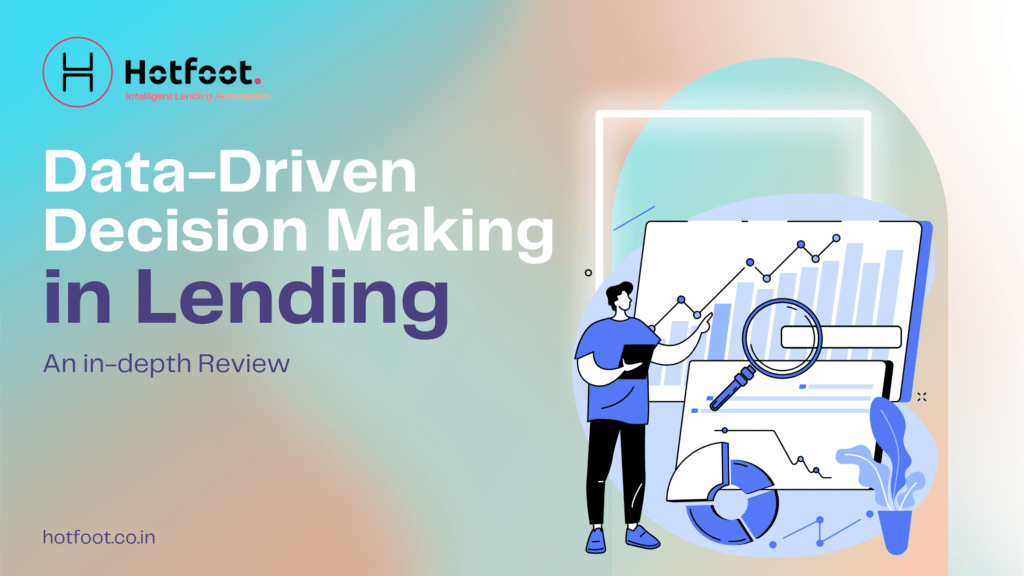
In the fast evolving lending landscape, data-driven decision making has become the base for financial institutions to navigate through the market complexities and mitigate risks that occur in the lending industry. With the advent of predictive analytics, lenders could optimize for credit risk assessment, detect fraud, personalize financial services and ensure regulatory compliance and build strategies. Let’s take a closer look at how these elements can streamline the lending journey and elevate the customer experience.
- Predictive analytics for Market Trends
Predictive analytics empowers the lenders to anticipate the market trends and customer behavior accurately. Predictive analytics uses the historical data along with machine learning and algorithms to analyze and predict the future outcomes. Financial institutions can use predictive analytics to avoid potential risks. Therefore, Predictive analytics serves as a compass to make informed decisions in Lending. Also, It plays a major role in identifying the lucrative market segments.
- Precise Credit Risk Assessment
Credit risk assessment allows lenders to analyze the creditworthiness of borrowers. This in-turn reduces the financial risk for the financial institutions. Traditional credit risk assessment methods often fall short in capturing the dynamics of the borrower profiles and market conditions. However, with the integration of advanced analytics, lenders can assess creditworthiness with unprecedented precision. With Artificial intelligence and machine learning algorithms and by accessing alternative data sources such as transaction history and social media activity, lenders can now evaluate customer creditworthiness holistically, resulting in reduced default rates and excellent lending practices.
- Robust Fraud Detection Mechanisms
Proactive fraud detection is paramount in safeguarding the integrity of lending operations. Data-driven fraud detection using machine learning can analyze huge data and identify suspicious patterns and anomalies in real time. Accordingly, the model can be trained to recognize fraud patterns. Thus, Predictive analytics acts as a guardian against identity theft or fraudulent loan applications. As a result, this preserves the customer trust and security of lending ecosystems.
- Personalized financial services
“One size does not fit all” is applicable to financial services also. With the power of data analytics, lenders can personalize their loan offer to meet the unique requirements of each individual customer. From behavioral analysis based campaigns to personalized loan products based on demographics, data-driven personalization enhances customer loyalty and satisfaction. Consequently this drives sustainable growth for the lending community.
- Regulatory compliance and Risk Mitigation
Regulatory compliance and risk mitigation is very essential for financial institutions. Data-driven decision making provides a robust framework for ensuring compliance while mitigating regulatory risks. By leveraging data analytics to monitor and report on key compliance metrics, lenders can proactively identify potential issues, implement corrective measures, and demonstrate adherence to regulatory standards, thus enabling them to maintain their reputation and credibility in the marketplace.
- Data-driven strategy development
Having a data strategy is very important for realizing the value of data and bringing meaningful outcomes that are aligned with the business goals. Hence, data strategy is the foundation for bringing in clarity for lenders seeking sustainable growth. By harnessing insights from comprehensive data analysis, leaders can formulate strategies that align with the market dynamics, customer requirements and organizational objectives. Not only for refining the current operational process, optimizing the products but also to expanding into new market segments, data-driven strategy can empower lenders to navigate the changes with confidence and agility.
- Promoting Consistency in Lending Lifecycle
Consistency is the cornerstone for successful lending operations. By leveraging data-driven insights, lenders can establish standardized processes and decision making frameworks that promote consistency across the lending lifecycle. From loan origination underwriting and loan management, consistency fosters transparency, accountability, and operational efficiency. This enables lenders to deliver superior service while minimizing risks and costs.
Data-Driven approach at Hotfoot
Hotfoot provides a wide range of advanced analytical products and solutions that are powered by data. With our proven expertise in analytics, lenders can achieve remarkable success in Risk Management, Decision Automation, and Financial Monitoring. Our collaborative approach ensures a deep understanding of your lending needs and objectives. This in turn enables us to shape your Credit policies and Product features with precision and efficiency.
- Rapid.ai – Hotfoot’s Rapid.Ai is your partner in pioneering accelerated lending through data-driven analytics.
- Lensights.ai – empowering real-time decision making with performance dashboards
- Naadi.ai – Ai powered financial insights like cash flow scores for individuals, MSMEs and Corporates.
Conclusion
In conclusion, data-driven decision making has revolutionized the lending landscape, empowering financial institutions to make informed decisions, avoid risks and enhance customer experience. By harnessing the power of predictive analytics, lenders can navigate through the market complexities with confidence. This also helps them drive innovation and unlock new growth opportunities. As the lending industry evolves, embracing a data-driven approach is a necessity for having a competitive edge and sustainable growth.